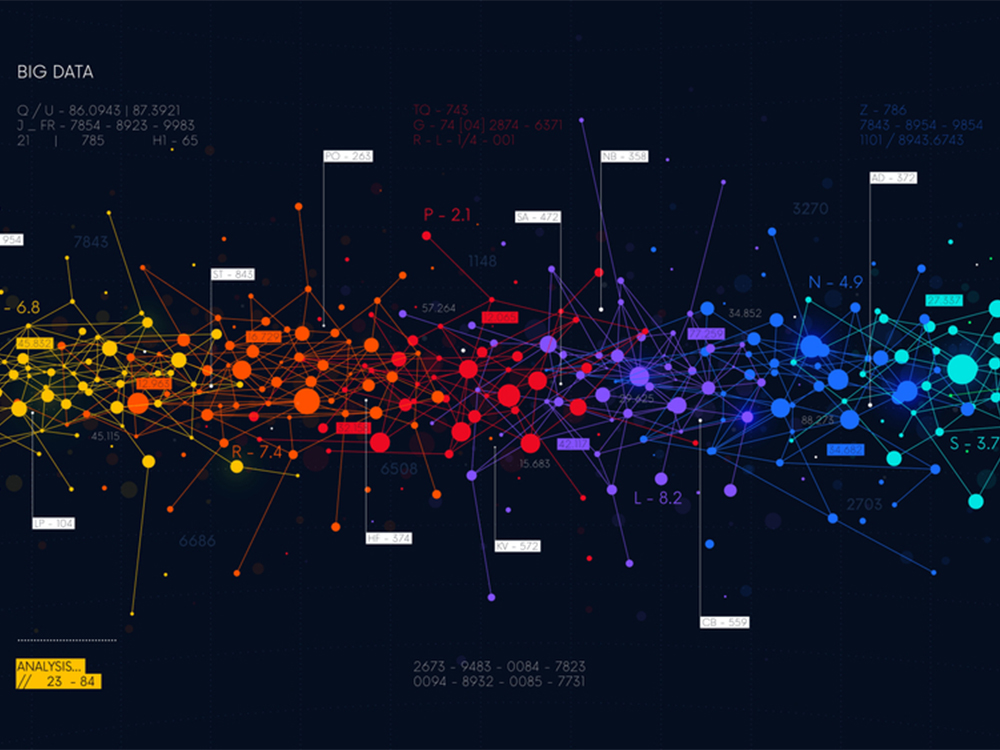In today’s data-driven world, businesses and researchers rely on powerful analytical techniques to extract insights and drive decision-making. One such technique is cluster analysis, which allows us to uncover patterns and group similar data points together. In this comprehensive guide, we will explore the methods and algorithms used in cluster analysis and learn how they can be applied to various real-world scenarios. Whether you are a marketing professional, a data scientist, or a business owner, understanding cluster analysis will empower you to make informed decisions and uncover hidden opportunities.
Cluster Analysis Methods Explained
Cluster analysis encompasses a variety of methods and algorithms, each suited for different types of data and problem domains. Let’s explore the key cluster analysis methods:
Connectivity Models
Connectivity models are based on the notion that data points closer in data space exhibit more similarity to each other than those farther away. Hierarchical clustering is an example of a connectivity model that builds clusters based on hierarchical relationships between data points. It starts by considering each data point as a separate cluster and progressively merges them based on their similarity, creating a tree-like structure called a dendrogram.
Centroid Models
Centroid models use iterative algorithms where similarity is derived by the closeness of a data point to the centroid or cluster center. The K Means clustering algorithm is a popular centroid-based model. It starts by randomly initializing cluster centroids and assigns data points to the nearest centroid. The centroids are then updated iteratively until convergence, resulting in well-defined clusters.
Distribution Models
Distribution models are based on the probability that data points in a cluster belong to the same distribution. The Expectation-Maximization (EM) algorithm is an example of a distribution-based model widely used in cluster analysis. It assumes that data points are generated from a mixture of probability distributions and estimates the parameters of these distributions to assign data points to clusters.
Density Models
Density models identify clusters based on regions of varied data point density. Unlike other models, density-based algorithms do not assume clusters to be of a specific shape or size. Instead, they focus on finding areas of high data point density separated by regions of low density. DBSCAN (Density-Based Spatial Clustering of Applications with Noise) and OPTICS (Ordering Points to Identify the Clustering Structure) are popular density-based clustering algorithms.
Best Practices for Cluster Analysis

Applying cluster analysis effectively requires following best practices that ensure accurate results and meaningful insights. Let’s explore the key practices for cluster analysis:
Preprocessing and Feature Selection
Before applying cluster analysis methods, it is crucial to preprocess and prepare your data. This includes handling missing values, normalizing or scaling variables, and selecting relevant features. Preprocessing ensures that the clustering algorithm receives high-quality input, leading to more accurate results. Feature selection involves identifying the most relevant attributes or variables that contribute significantly to the clustering process, improving performance and reducing noise.
Choosing the Right Distance Metric
The choice of distance metric is critical in clustering. Different distance metrics capture different notions of similarity or dissimilarity between data points. Common distance metrics include Euclidean distance, Manhattan distance, and cosine similarity. Selecting an appropriate distance metric depends on the nature of your data and the underlying problem.
Determining the Optimal Number of Clusters
Determining the optimal number of clusters is essential to avoid underfitting or overfitting the data. Several methods, such as the Elbow method and the Silhouette coefficient, can help in finding the optimal number of clusters. The Elbow method plots the variance explained as a function of the number of clusters and identifies the “elbow” point where the gain in variance explained starts to diminish. The Silhouette coefficient measures the compactness and separation of clusters, providing an indication of the quality of clustering.
Evaluating Cluster Validity
Evaluating the validity of clusters helps assess the quality and coherence of the clustering results. Internal validation measures, such as the Davies-Bouldin Index and the Dunn Index, evaluate the compactness and separation of clusters. External validation measures, such as the Adjusted Rand Index and the Fowlkes-Mallows Index, compare the clustering results with known ground truth labels or external criteria. Evaluating cluster validity ensures that the clusters generated are meaningful and align with the underlying data patterns.
Interpreting and Visualizing Results
Interpreting and visualizing the clustering results is crucial for extracting insights and communicating findings effectively. Explore the characteristics and profiles of each cluster to understand the patterns and relationships within the data. Visualize the clusters using scatter plots, heatmaps, or parallel coordinate plots to reveal the structure and distribution of the data points. Effective interpretation and visualization of clustering results facilitate decision-making and guide subsequent actions.
Real-World Applications of Cluster Analysis

Cluster analysis finds valuable applications in various industries and domains. Let’s explore some real-world scenarios where cluster analysis is widely used:
Customer Segmentation
Customer segmentation is a fundamental application of cluster analysis in marketing. By clustering customers based on demographics, purchasing behavior, or preferences, businesses can identify distinct customer groups with similar characteristics. This enables targeted marketing strategies, personalized communication, and tailored product offerings to meet the specific needs and preferences of each customer segment. Customer segmentation helps businesses optimize their marketing efforts and enhance customer satisfaction.
Image and Object Recognition
In computer vision and image processing, cluster analysis plays a vital role in image and object recognition tasks. By clustering similar visual patterns or features such as shapes, colors, or textures, algorithms can recognize and classify objects in images or videos. This has applications in areas like facial recognition, object tracking, content-based image retrieval, and autonomous driving. Cluster analysis enables machines to perceive and understand visual information, leading to advancements in various fields.
Anomaly Detection
Anomaly detection involves identifying rare or abnormal instances in datasets. Cluster analysis aids in this process by creating clusters of normal or expected behavior, making it easier to detect outliers or anomalies. This has applications in fraud detection, network intrusion detection, and identifying unusual patterns in financial transactions or sensor data. By detecting anomalies, businesses can mitigate risks, ensure data integrity, and enhance security measures.
Document Clustering
In natural language processing and text mining, cluster analysis is used for document clustering. By clustering similar documents based on their content, organizations can organize large document collections, extract themes or topics, and enable efficient document retrieval. Document clustering finds applications in information retrieval, content recommendation, sentiment analysis, and knowledge discovery. It helps researchers and businesses gain insights from vast amounts of textual data.
Healthcare and Genomics
Cluster analysis has significant applications in healthcare and genomics. In healthcare, it can be used to cluster patients based on their medical records, symptoms, or genetic profiles, aiding in personalized medicine, disease diagnosis, and treatment planning. In genomics, cluster analysis helps in clustering gene expression patterns, identifying gene regulatory networks, and understanding molecular pathways. This knowledge contributes to advancements in precision medicine and personalized healthcare approaches.
Social Network Analysis
Social network analysis utilizes cluster analysis to uncover communities or groups within social networks. By clustering individuals based on their social connections, interests, or behavior, researchers gain insights into social structures, information diffusion, and influence propagation. Social network analysis is valuable in understanding online communities, viral marketing, targeted advertising, and social influence analysis. Cluster analysis helps uncover hidden patterns and relationships in complex social networks.
Market Segmentation
Market segmentation involves dividing a market into distinct segments based on consumer behavior, preferences, or needs. Cluster analysis aids in identifying homogeneous groups of consumers with similar characteristics, allowing businesses to customize their marketing strategies and product offerings for each segment. Market segmentation enables efficient resource allocation, improved customer satisfaction, and targeted marketing campaigns. Cluster analysis helps businesses understand their target audience and cater to their specific needs effectively.
Recommender Systems
Recommender systems utilize cluster analysis to generate personalized recommendations based on user behavior and preferences. By clustering users with similar tastes or interests, these systems can suggest relevant products, movies, or content that align with the user’s preferences. Recommender systems have applications in e-commerce, content streaming platforms, and personalized advertising. Cluster analysis enhances user experience by providing tailored recommendations and improving customer engagement.
These examples highlight the versatility of cluster analysis and its impact across industries. By leveraging the power of cluster analysis, businesses and researchers can unlock valuable insights, improve decision-making processes, and drive innovation.
The Future of Cluster Analysis

As technology continues to advance and the volume of data grows exponentially, the future of cluster analysis holds immense potential. Here are some emerging trends and developments shaping the future of cluster analysis:
Integration with Artificial Intelligence
The integration of cluster analysis with artificial intelligence (AI) techniques is poised to revolutionize data analysis. AI algorithms, such as deep learning and neural networks, can enhance the capabilities of cluster analysis by automatically learning complex patterns and representations from data. This integration allows for more accurate clustering results and the ability to handle high-dimensional and unstructured data effectively.
Incorporation of Big Data Analytics
The advent of big data has presented both opportunities and challenges for cluster analysis. With the increasing availability of massive datasets, traditional clustering algorithms face scalability issues. However, advancements in distributed computing frameworks, such as Apache Hadoop and Spark, enable efficient processing and analysis of big data. Cluster analysis techniques that can handle big data, such as scalable clustering algorithms and parallel processing techniques, are becoming crucial for extracting insights from large and complex datasets.
Hybrid and Ensemble Clustering Approaches
Hybrid and ensemble clustering approaches combine multiple clustering algorithms or strategies to improve the accuracy and robustness of clustering results. These approaches leverage the strengths of different algorithms and overcome their limitations. By combining clustering algorithms with complementary characteristics, hybrid and ensemble methods can handle diverse data types, capture complex relationships, and enhance the overall clustering performance.
Incorporation of Domain Knowledge
Incorporating domain knowledge into the clustering process can lead to more meaningful and interpretable results. By integrating prior knowledge, constraints, or expert guidance into the clustering algorithms, domain-specific insights can be incorporated, leading to more accurate and contextually relevant clusters. This trend promotes the collaboration between domain experts and data scientists, allowing for domain-specific interpretations and actionable insights.
Interactive and Visual Clustering
Interactive and visual clustering techniques aim to enhance the user experience and facilitate exploratory data analysis. These approaches enable users to interactively explore the clustering results, refine the clusters, and gain deeper insights into the underlying data patterns. Visualizations, such as interactive scatter plots, heatmaps, and network graphs, provide an intuitive and interactive way to understand and analyze the clusters. This trend empowers users with the ability to explore and interpret the clustering results more effectively.
Privacy-Preserving Clustering
With increasing concerns about data privacy and security, privacy-preserving clustering techniques are gaining importance. These techniques aim to protect sensitive information while performing clustering analysis. Privacy-preserving clustering methods, such as differential privacy and secure multi-party computation, allow data to be analyzed and clustered without compromising individual privacy. This trend ensures that cluster analysis can be applied to sensitive data while respecting privacy regulations and ethical considerations.
Conclusion
Cluster analysis is a versatile and powerful technique that allows us to uncover patterns, group similar data points, and extract meaningful insights. By understanding the various methods, best practices, and real-world applications of cluster analysis, you are equipped to apply this technique to your own data analysis tasks.
From customer segmentation to image recognition, from anomaly detection to market segmentation, cluster analysis finds diverse applications across industries. As technology advances, the integration of AI, the incorporation of big data analytics, and the development of hybrid and interactive clustering approaches are shaping the future of this field.
By embracing these trends and staying updated with the latest advancements, you can harness the full potential of cluster analysis and drive data-driven decision-making, innovation, and success in your endeavors.
Ready to unlock the power of cluster analysis and drive data-driven success? Visit AIDataHouse.com to explore our comprehensive services and discover how we can help you leverage the full potential of your data. Take the first step towards uncovering valuable insights and making informed decisions. Click now to unlock the power of cluster analysis and transform your business!










